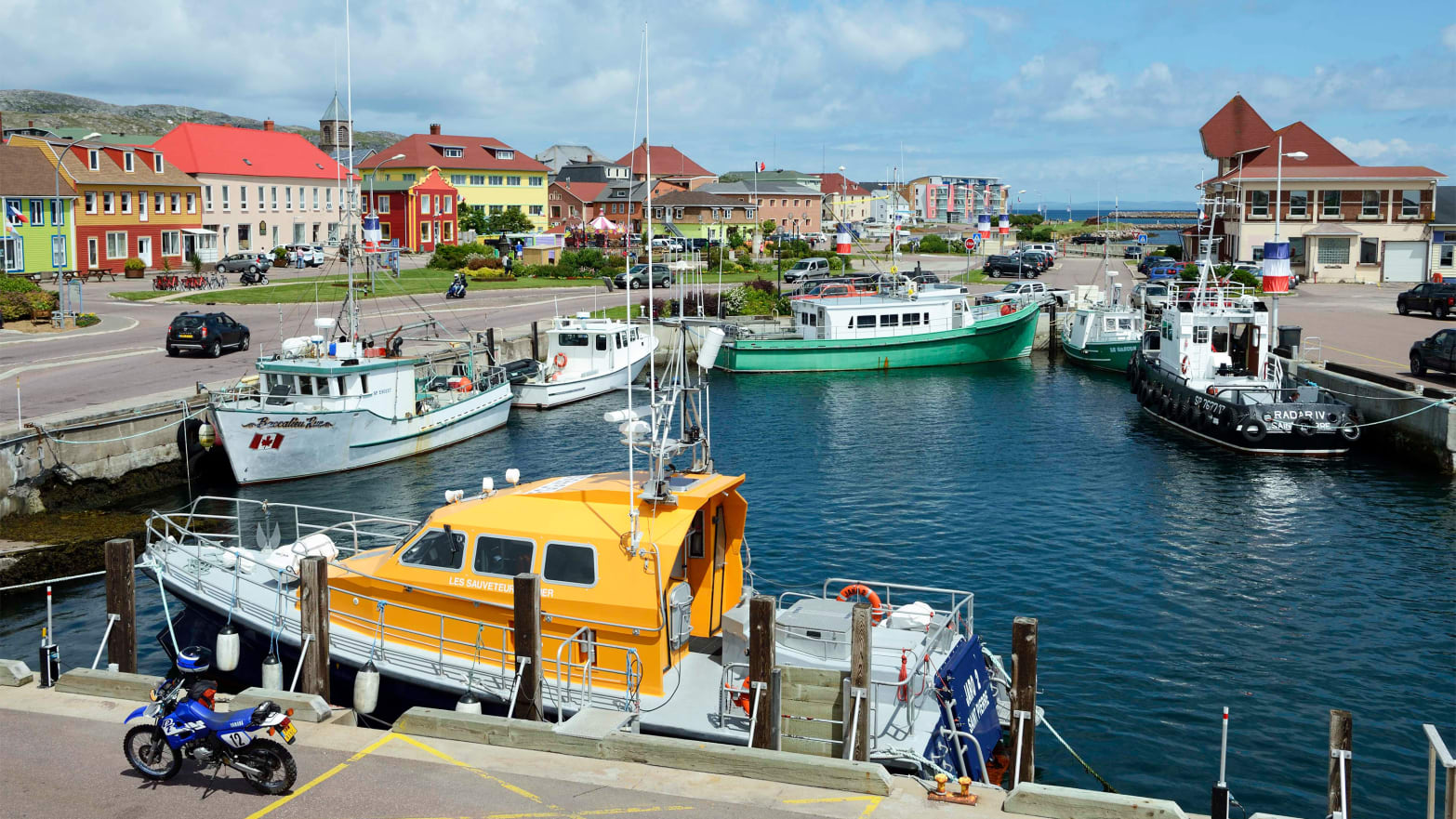They were sexy headlines and while they were naïvely premature, they did much to remind the world that there’s a tiny and eccentric piece of France off the eastern coast of Canada that was once a rum-runner’s paradise favored by Al Capone and now exists in a time warp of sorts in its own time zone.
“Drive from Canada to France? A new ferry from Newfoundland will allow you to do that,” one headline promised. “New ferry means France could soon be just a short drive from Newfoundland,” predicted another.
Forget the car part—a year-long dock dispute is supposedly wrapping up with an impending wharf extension on the Canadian side of things. The truth is, you don’t even want a car for this “European” visit. To reach the French archipelago of Saint-Pierre et Miquelon from the town of Fortune in Newfoundland and Labrador, just take the slick, high-speed passenger ferry.
Passport in hand and rental car safely stowed in a parking lot, I head to Saint-Pierre first by ferry across the North Atlantic and then on foot—the capital city, also called Saint-Pierre, is compact and walkable. I want to figure out how this place has remained so steadfastly French when it’s 12 miles from Newfoundland and why virtually nobody knows about it.
The late Anthony Bourdain caught wind of it. The American adventurer who started out cooking fancy French food was in Newfoundland shooting Parts Unknown and couldn’t resist a quick flight over to eat. He kicked back with Saint-Pierre food personality Maïté Légasse over her signature foie gras, sea urchin pâté, stuffed squid, and barbecued capelin, not to mention tarte amandine with local bakeapples that look like mutant yellow raspberries and are full of seeds but taste surprisingly docile.
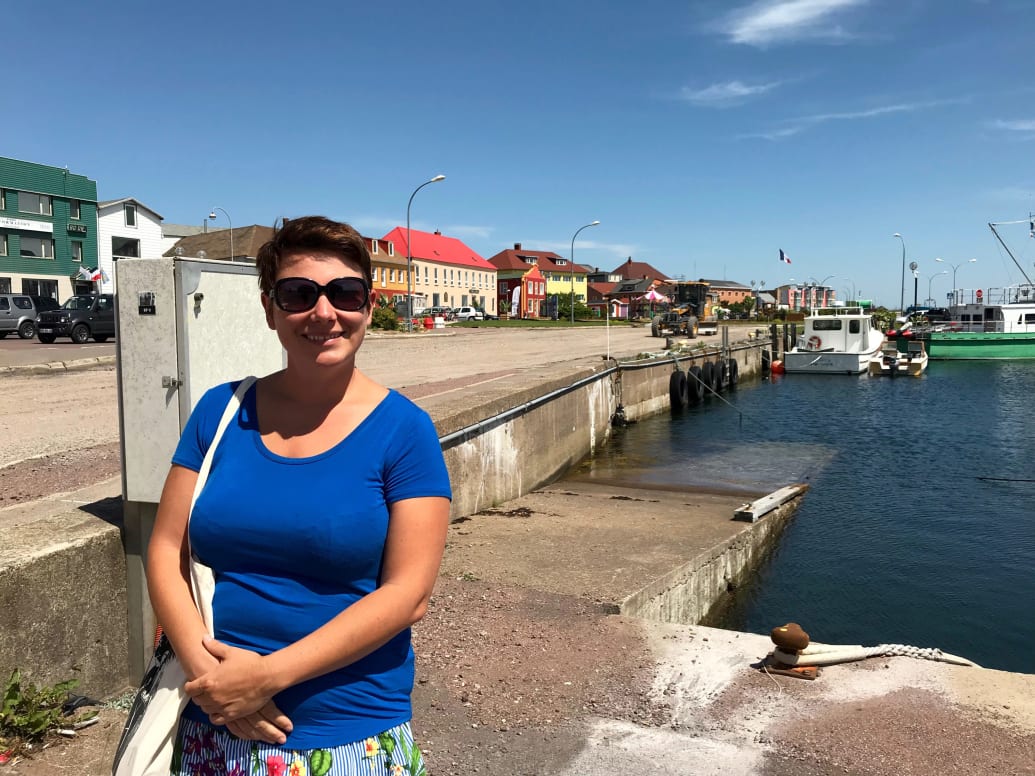
Jennifer Bain
If the “Bourdain Effect” isn’t enough to finally put this geopolitical oddity on the world travel map, then nothing is. Actually, let me take that back. Saint-Pierre is already on the radar of cruise ships—at least a dozen intrepid ships drop by each year for a few hours for a quick French experience.
Like Bourdain, who I ate with twice in the line of duty in Toronto before his devastating suicide, I discover that the archipelago is the last French territory in North America. Technically a self-governing collectivité territoriale, its three main islands are home to 6,000 people who use the Euro and 220-volt plugs, close their shops from noon to 2 p.m. for leisurely lunches with family, and like to take Sunday off.
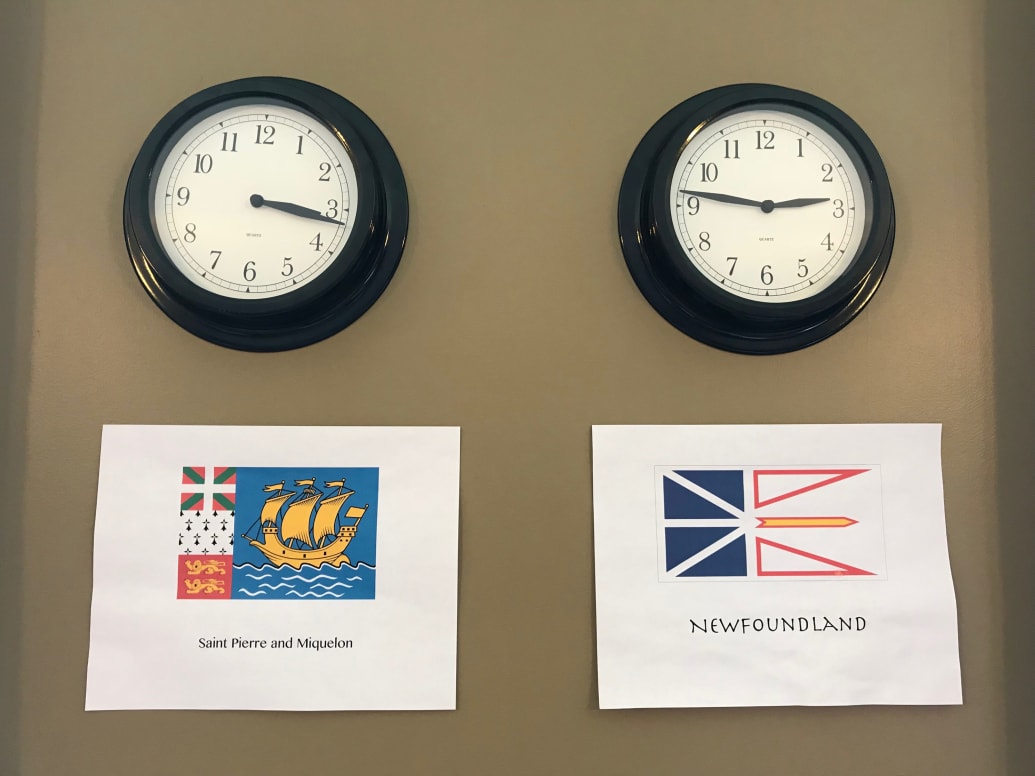
Jennifer Bain
The country also exists in its own time zone—half an hour ahead of Newfoundland, which is already 30 minutes faster than anywhere else in Canada. What’s more, parts of the island pick up Canadian cell towers and randomly switch to Newfoundland time.
For such a small place, it sure is confusing. Luckily there’s plenty of French wine to go with all the foie gras, croissants, clafoutis, and talk of rum-runners and gangsters.
I take a private walking tour with Eric Simon from L’Arche Museum and Archives, which displays a ghoulish French guillotine used only once here to behead a murdering fisherman. He waxes poetic about the island’s unique architecture, particularly enclosed porches called les tambours, and stops at a playground where people go to play the Basque game pelota.
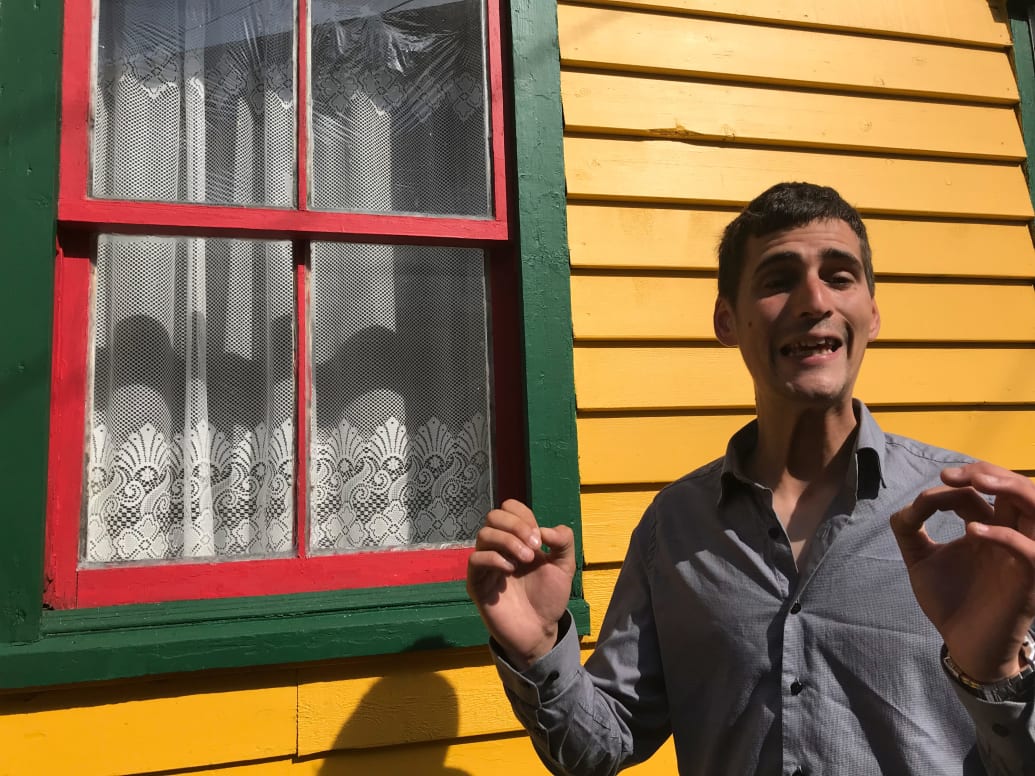
Architecture Guide Eric Simon
Jennifer Bain
Simon also reminisces about how “totally legally for 11 years Saint-Pierre would become the alcohol warehouse of North America.” From 1922 to 1933, during American Prohibition, Saint-Pierre legally stored booze from Canada and around the world until bootleggers came for the rum, whiskey, wine, and more and smuggled it by ship to thirsty Americans.
“These were crazy times around Saint-Pierre,” says Simon, adding that a lot of locals gave up cod fishing to make fortunes, and even gangsters like Al Capone set up bases on the island. Outside the Robert Hotel, Simon stops to solemnly announce: “Some even say Al Capone himself stayed here.” In fact, the hotel’s website proudly counts Capone as a former client.
When Jean Pierre Andrieux’s family owned the hotel, there was a small museum with a collection of prohibition artifacts, including photos, letters, bottles, cans, barrels, advertising material and even Capone’s hat. He stayed at the hotel for a few nights. “The hat was given to my maternal grandfather who had the American House, a large building on the waterfront which was in the general business including selling liquor,” explains Andrieux. “Capone went in this building. The staff was apprehensive when they saw him there and went to fetch my grandfather, who as subject of conversation told him that he had a nice hat. So Capone said, ‘Here, you like it, it’s a gift from me.’” The hat, and the collection, moved with Andrieux’s grandfather to St. John’s, Newfoundland when he sold the hotel.
When Prohibition ended in 1933, so did the party on these French islands. The intriguing Heritage Museum is closed every time I walk by, but it’s apparently the place to go to see Prohibition-era rum bottles, liquor crates and photos. There have been English and French books written about Saint-Pierre’s boozy history, and some are sold in the city’s small, independent shops. There isn’t a mall or chain store in sight, by the way.
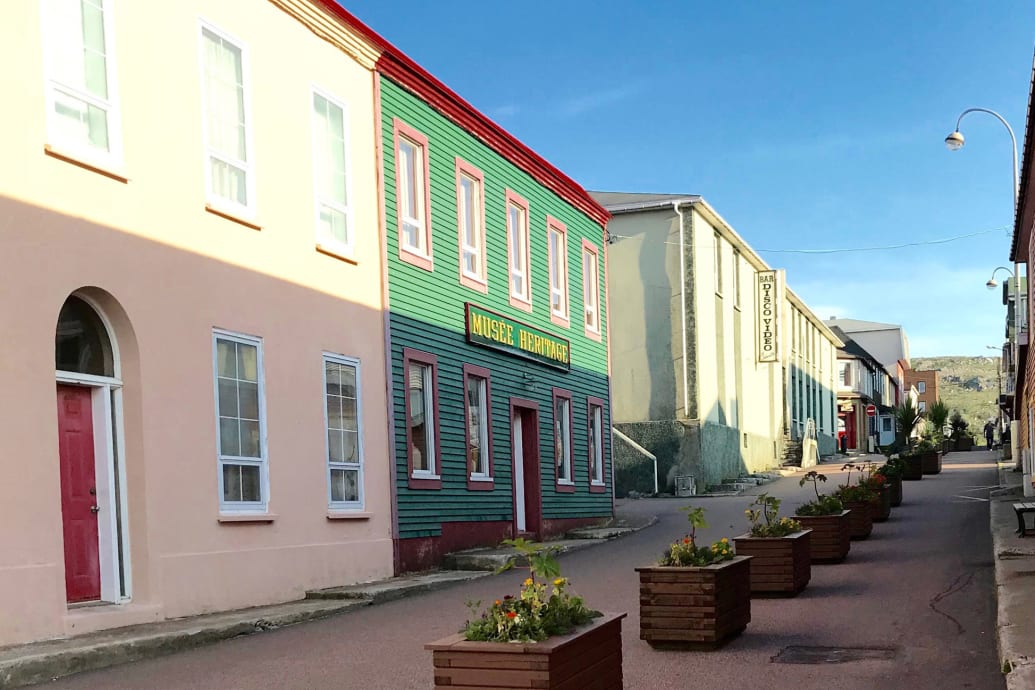
Musee Heritage
Jennifer Bain
To properly wrap your head around this collection of islands, think of Saint-Pierre as the small “culture” island with 5,633 people, interesting architecture, boutiques, and bistros. Consider Miquelon the large “nature” island with just 641 residents, an eco interpretation center, horses that winter in barns and run free the rest of the year, a seal colony that lives in a lagoon, deer (and deer hunting), volcanic rock, a boreal forest, boardwalks, bogs, and carnivorous butterwort plants that devour insects that get stuck in the slime on their leaves.
These two main islands are connected by high-speed ferries and actually have docks that can handle vehicles and not just passengers.

Horses on the Isthmus
Jennifer Bain
Then there are bonus places not included in the country’s official name. Langlade is an island full of summer homes that’s linked to Miquelon by “the dune,” a sand “isthmus” with a road through it. Île Aux Marins, nicknamed Pioneers Island, is a car-free living museum that celebrates the country’s fishing heritage, has some vacation homes and is connected to Saint-Pierre by water taxi. Finally, there are small, uninhabited islands to view by private boat, if you are at all interested in whales, razorbills, and puffins.
The Saint-Pierre flag situation is just as charming and jumbled. The official one is the French flag. The unofficial flag shows the ship that brought explorer Jacques Cartier here to claim the islands for France on the right side, and a stack of squares honoring the original Basque, Breton, and Norman settlers on the left side.
I turn to guide Bertrand Laroque with Taxi Saint-Pierre for more insight. He shows me the sights on Saint-Pierre, including the “new” international airport that is 20 years old and tiny, but gets direct Air Saint-Pierre flights from Paris and a handful of Canadian cities. We don’t see a soul, not even a guard, when we wander through one afternoon.
Laroque explains that he and his compatriots are French nationals who grow up with the French curriculum and get free tuition to attend university in France, but then arrive to find the Europeans aren’t always thrilled to subsidize the strange, remote islands near Canada with government jobs and expensive ferries. The island nation has started striking good tuition deals with Canada and so younger generations like his are more likely to move to Quebec, Newfoundland, or even New Brunswick for university.
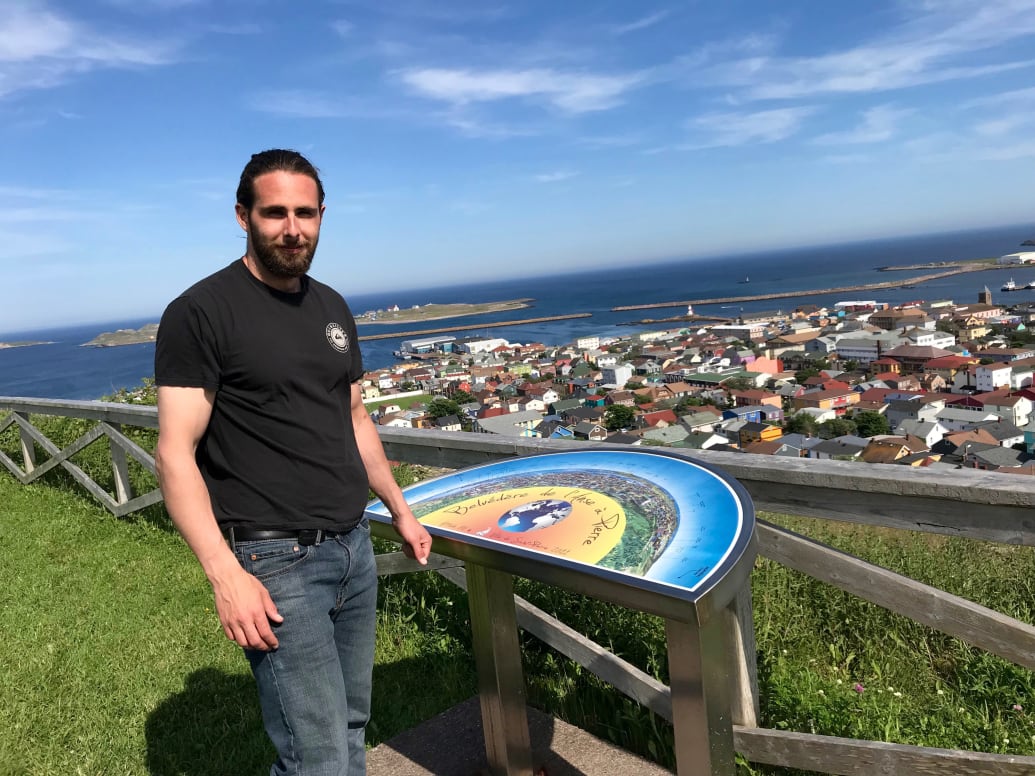
Guide Bertrand Laroque in Saint Pierre
Jennifer Bain
“I come from a little French island near Canada” is how Laroque explains things to strangers, but inevitably must then clarify that he means France and not Quebec. He studied in Moncton, New Brunswick and when pressed, goes out on a limb to say, “I feel like a Canadian, of course.”
For Légasse, it’s interesting how other people label her: “Here, I’m a French lady. In France, I’m a Canadian lady.” She explains that the whole ferry situation keeps the connection to nearby Canada—and North American culture—at bay. It’s wildly expensive to take a family on the passenger ferry to Fortune, rent a car, and drive 45 minutes to, say, Marystown to the closest Walmart and McDonald’s. St. John’s, the Newfoundland capital, is four hours away.
And so Saint-Pierre remains literally and figuratively isolated, which is less charming for locals than it is for visitors. Summer at least brings an influx of interesting tourists, plus the French national celebration of Bastille Day, Dune Fest, and the Rock N Rhum festival.
While there is quiet chatter about modern-day rum, cocaine, and marijuana smuggling, the most fun I have involves drinking at fishing shed 20. Around 6 p.m. each day, random strangers can join a boisterous group of people known as the “Zigotos” (which translates as strange, different or bizarre people). The nonprofit association works to save dories, the traditional, flat-bottomed boat, and a few members take me for a spin in one to Grand Colombier Island where there is an embarrassment of puffins and razorbills and where we might have tossed a fishing line into the water (but we would have thrown back anything we caught out of season).
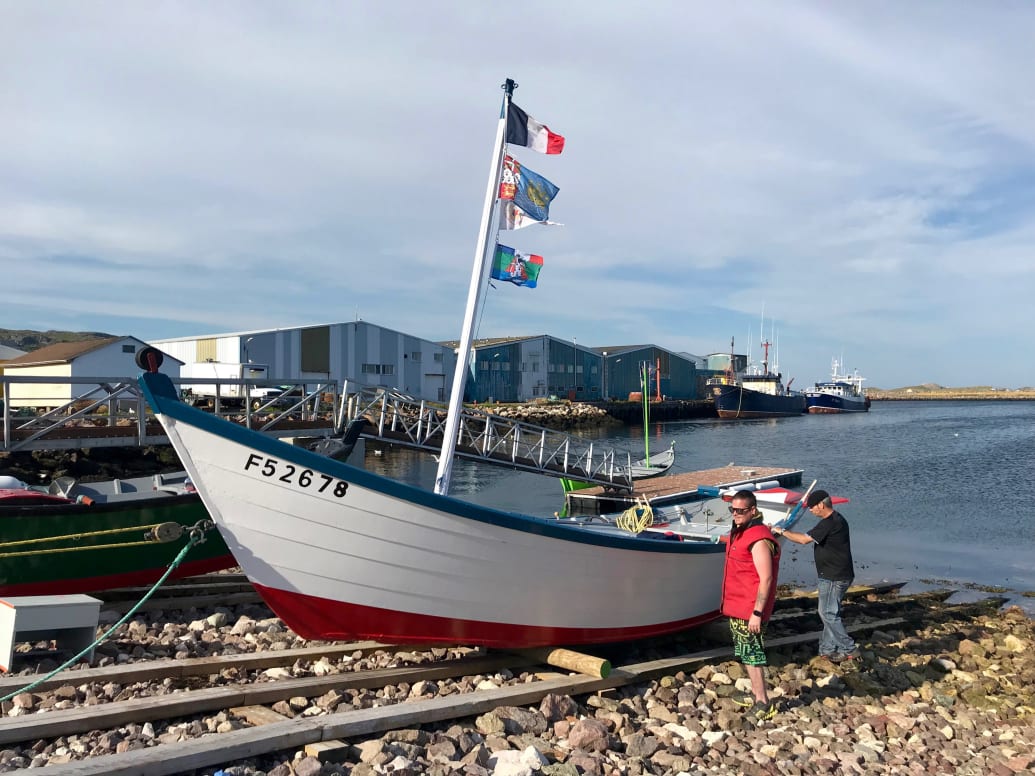
Jennifer Bain
Back on shore, the rest of the Zigotos gang throw fresh crabs in a big pot in one of their sheds and start handing out plastic cups filled with cheap rum—not fabulous French wine like you might expect.
It’s no surprise that eating well is mandatory on this French island. You will be screwed if you don’t make dinner reservations—there are usually more people wanting to eat out than there are restaurants—and I recommend getting up early to tour the pastry and baguette shops before they sell out. I am not alone in singling out Guillard Gourmandises. I can’t stop thinking about bichon au citron, puff pastry turnovers stuffed with lemon curd, which I first tasted when they were just out of the oven.
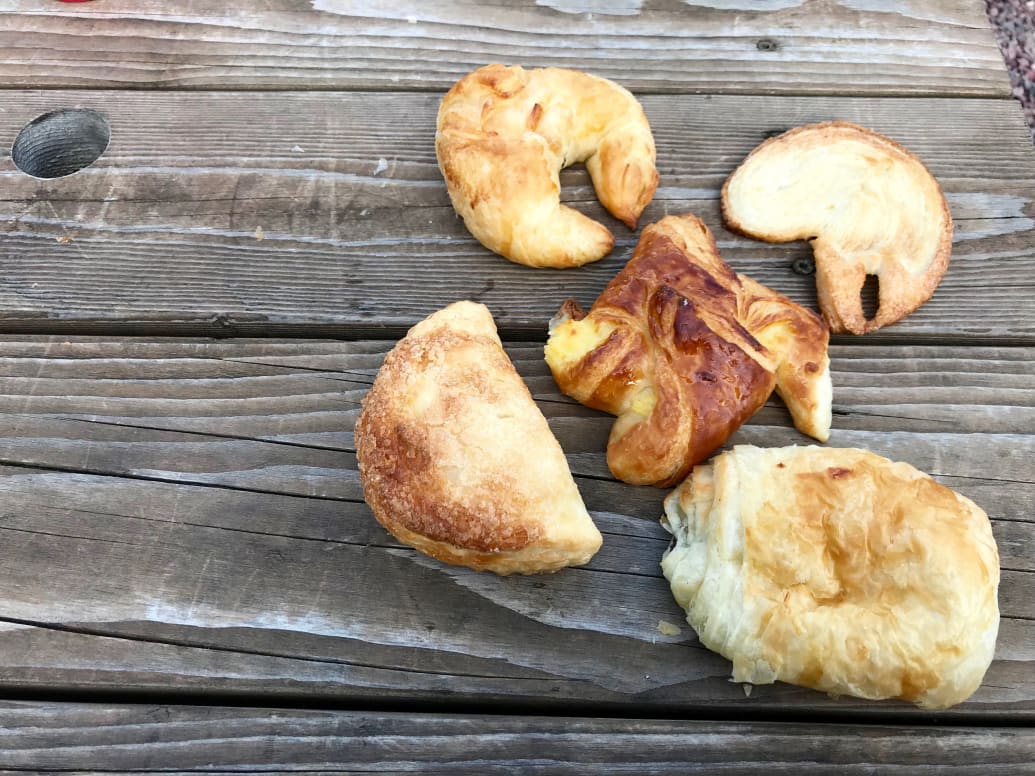
Pastries from Guillard Gourmandises
Jennifer Bain
Légasse, who is planning to open a café called Ma P’tite Cocotte, wants to make sure that everyone who visits knows that “foie gras is culture.” I order the fattened duck or goose liver every day in various incarnations, with bakeapple chutney at Le Feu de Braise, fruit and berry sauce at Les P’tits Graviers, and with onion jam at Restaurant Crêperie du Vieux Port. There is none at funky Le Lab 97, but the charcuterie plate fills the void.
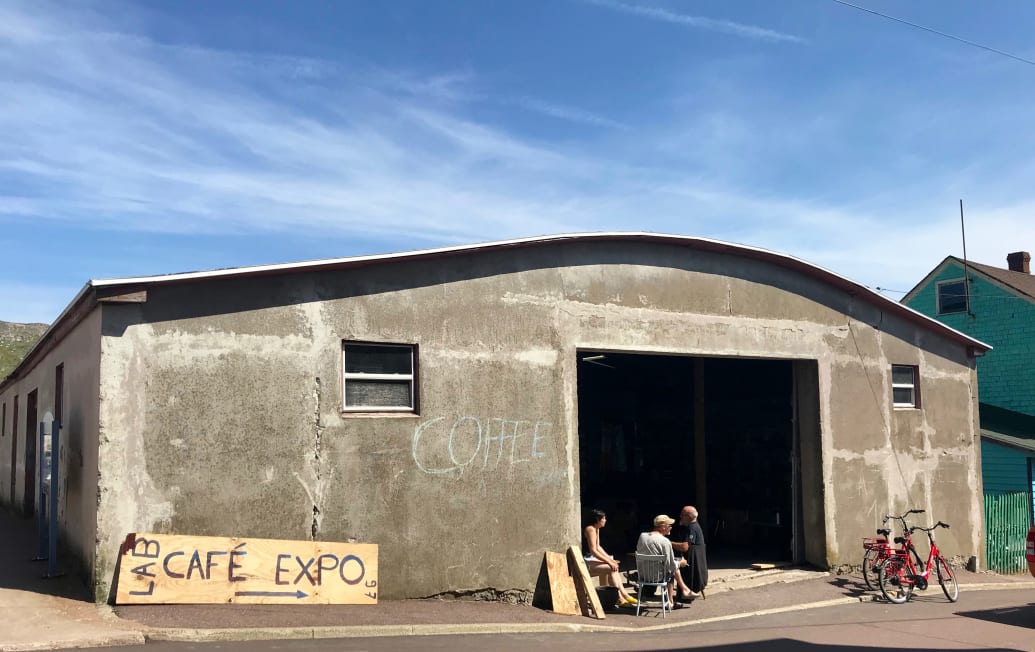
Le Lab
Jennifer Bain
For those wanting to take foie gras, French booze, cheese, jam, bread, and pastries home via Canada, the Saint-Pierre government has thoughtfully prepared a brochure.
There is an extremely generous 44-pound allowance for foie gras, as long as it’s canned or bottled with “identifying marks, indicating the product and the country of origin.” I buy five small jars of parfait de foie gras and crème de foie gras (unclear on the difference, to be honest) from Chez Julien, an atmospheric corner grocery store with a fabulous liquor selection.
There is a small price to pay for declaring this French luxury item on my customs form. Back in Fortune trying to re-enter Canada honestly, I’m told to wait on a bench until everyone is off the ferry and am then escorted to a private inspection room.
I fear my foie gras will be seized in some sort of unfair, unannounced crackdown. But no, they’re just looking for improperly sealed jars, explains a sheepish border agent, butchering the French pronunciation of foie gras in her thick Newfoundland accent.
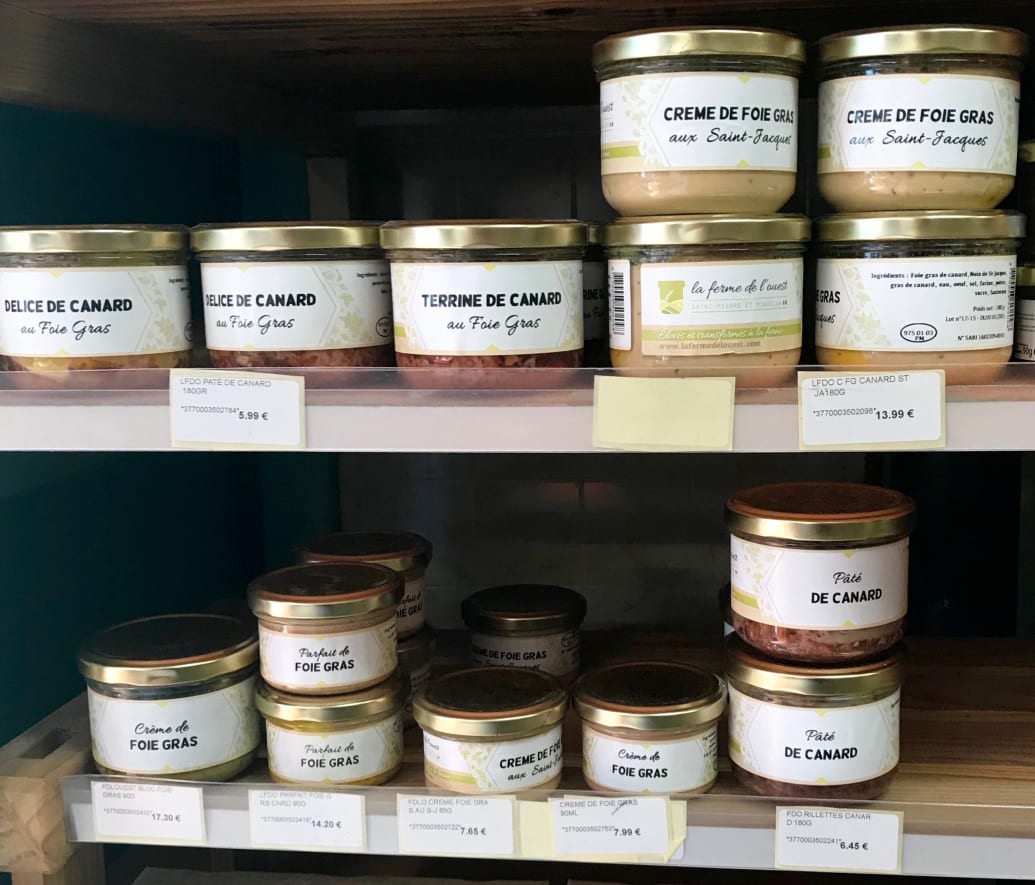
Foie gras at Chez Julien
Jennifer Bain
I suspect she has no idea how delicious it is, or how magically bizarre are the French islands that you can see from Canada on a clear day, but I keep my mouth shut and make my way back to the parking lot where my rental car awaits, jarred treasure in hand.

